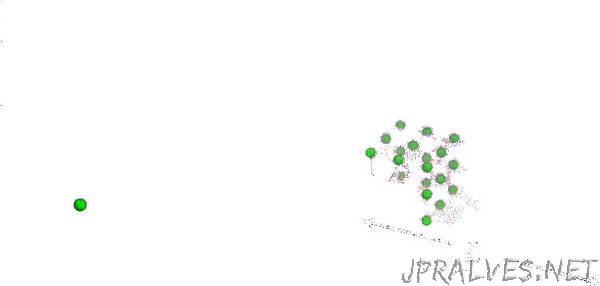
“Physicists at the National Institute of Standards and Technology (NIST) have come up with a way to link a group of atoms’ quantum mechanical properties among themselves far more quickly than is currently possible, potentially providing a tool for highly precise sensing and quantum computer applications. NIST has applied for a patent on the method, which is detailed in a new paper (link is external) in Physical Review Letters.
The method, which has not yet been demonstrated experimentally, essentially would speed up the process of quantum entanglement in which the properties of multiple particles become interconnected with one other. Entanglement would propagate through a group of atoms in dramatically less time, allowing scientists to build an entangled system exponentially faster than is common today.
Arrays of entangled atoms suspended in laser light beams, known as optical lattices, are one approach to creating the logic centers of prototype quantum computers, but an entangled state is difficult to maintain more than briefly. Applying the method to these arrays could give scientists precious time to do more with these arrays of atoms before entanglement is lost in a process known as decoherence.
The method takes advantage of a physical relationship among the atoms called dipolar interaction, which allows atoms to influence each other over greater distances than previously possible. The research team’s Alexey Gorshkov compares it to sharing tennis balls among a group of people. While previous methods essentially allowed people to pass tennis balls only to a person standing next to them, the new approach would allow an individual to toss them to people across the room.
“It is these long-range dipolar interactions in 3-D that enable you to create entanglement much faster than in systems with short-range interactions,” said Gorshkov, a theoretical physicist at NIST and at both the Joint Center for Quantum Information and Computer Science and the Joint Quantum Institute, which are collaborations between NIST and the University of Maryland. “Obviously, if you can throw stuff directly at people who are far away, you can spread the objects faster.”
Applying the technique would center around adjusting the timing of laser light pulses, turning the lasers on and off in particular patterns and rhythms to quick-change the suspended atoms into a coherent entangled system.
The approach also could find application in sensors, which might exploit entanglement to achieve far greater sensitivity than classical systems can. While entanglement-enhanced quantum sensing is a young field, it might allow for high-resolution scanning of tiny objects, such as distinguishing slight temperature differences among parts of an individual living cell or performing magnetic imaging of its interior.
Gorshkov said the method builds on two studies from the 1990s in which different NIST researchers considered the possibility of using a large number of tiny objects—such as a group of atom—as sensors. Atoms could measure the properties of a nearby magnetic field, for example, because the field would change their electrons’ energy levels. These earlier efforts showed that the uncertainty in these measurements would be advantageously lower if the atoms were all entangled, rather than merely a bunch of independent objects that happened to be near one another.
“Uncertainty is the key here,” said Gorshkov. “You want that uncertainty as low as possible. If the atoms are entangled, you have less uncertainty about that magnetic field’s magnitude.”
Getting the atoms into an entangled state more quickly would be a potential advantage in any practical application, not least because entanglement can be fleeting.
When a group of atoms is entangled, the quantum state of each one is bound up with the others so that the entire system possesses a single quantum state. This connection can exist even if the atoms are separated and completely isolated from one another (giving rise to Einstein’s famous description of it as “spooky action at a distance”), but entanglement is also quite a fragile condition. The difficulty of maintaining it among large numbers of atoms has slowed the development of entanglement-based technologies such as quantum computers.
“Entangled states tend to decohere and go back to being a bunch of ordinary independent atoms,” Gorshkov said. “People knew how to create entanglement, but we looked for a way to do it faster.”
If the method can be experimentally demonstrated, it could give a quantum computer’s processor additional time so it can outpace decoherence, which threatens to make a computation fall apart before the qubits can finish their work. It would also reduce the uncertainty if used in sensing applications.
“We think this is a practical way to increase the speed of entanglement,” Gorshkov said. “It was cool enough to patent, so we hope it proves commercially useful to someone.””
